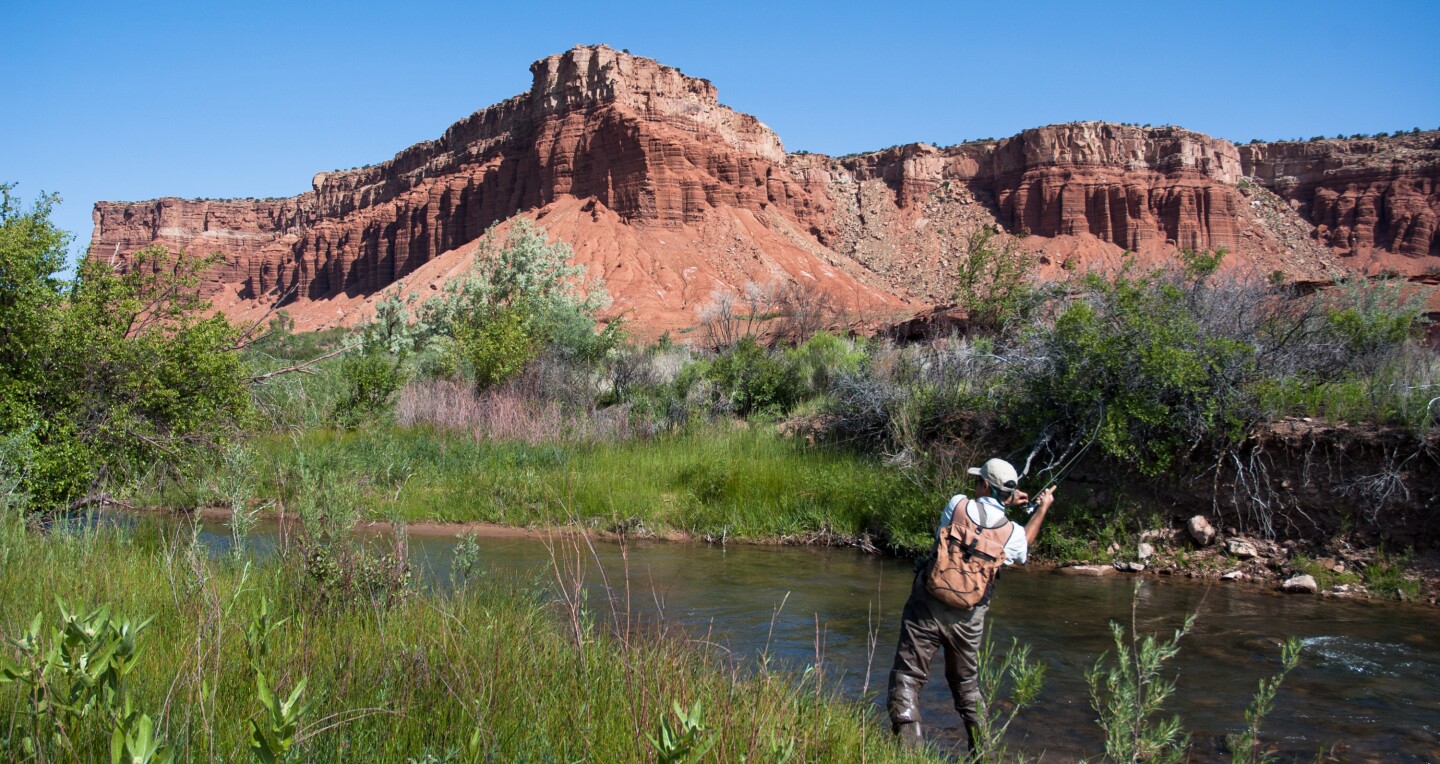Awash in stunning scenery, with a pace opposite the usual rush of everyday life, Utah’s Capitol Reef region is one of the best ways to maximize vacation time by doing less. This getaway inherently inspires visitors to forget about rushing off to the next the thing and to simply be present and immersed in natural beauty.
Well apart from the crowds and more high-traffic outdoor destinations in the state, this is the land of ancient, serene landscapes, world-class stargazing, and rolling rivers that wind like blue-green ribbons through red sandstone sculpted by millennia of erosion. Capitol Reef’s calm, quiet atmosphere, just three hours from Salt Lake City, is like a page out of the southwest’s past before four-wheel drive was ubiquitous (though the area’s restaurants and accommodations are thankfully quite contemporary).
In our increasingly connected world, this place has the power to truly rejuvenate by allowing you to leave behind some parts of modern life and rediscover something more timeless. From nights taking in expanses of star-filled skies, to meditative days fishing and exploring the quiet slot canyons of Capitol Reef National Park—this is the journey to connect with nature and yourself.
Itinerary / 6 DAYS
PLAN YOUR TRIP
Sandra Salvas/Sandra Salvas
DAYS 1-2Leaving civilization behind (for a night)
To get outfitted with camping and outdoor supplies, head to Recreation Outlet just south of downtown. For a quick lunch and top quality camping food and snacks (this is still a vacation) Caputo’s is a must-visit. This local favorite Italian deli and market is the perfect spot to stock up for fine dining alfresco. For more everyday items (it doesn’t hurt to bring a few large jugs of water) there are grocery stores a few blocks away in downtown or Trolley Square.
Once you’re geared up, it’s time to hit the road. It’s about a three-hour drive to the San Rafael Swell. Break up the drive with a stop in historic Helper (about two hours from Salt Lake City), a mining town with preserved buildings from its storied past. The San Rafael Swell is a 75-by-40-mile dome of rock that’s been shaped into a winding maze of valleys, canyons, buttes, and mesas by some 60 million years of flash flooding. The best way to appreciate the scale of this incredible place is the via the Wedge Overlook Trail by hiking or mountain bike. You’ll enjoy a complete view of the 14-mile-long, sandstone-carved Little Grand Canyon.
For campers, Buckhorn Draw Road (about a 45-minute drive from the trail) is one of the most beautiful places to sleep outdoors. Set in the middle of the canyon walls and visible from the Wedge Overlook, the stars at their brightest and most brilliant here. For those who prefer a roof over their heads (and running water), the family-owned Castle Valley Outdoors offers guided hunting and fly fishing trips with rustic lodge-style accommodations. Or you can rent a room or the entire house at The Nielsen House. Both options are about an hour away from the Wedge Overlook Trail.

Sandra Salvas/Sandra Salvas
DAY 3The gateway to nature’s wonders
Whether camping or staying indoors, the accommodations around Torrey are especially relaxing. Campers can reserve a spot at Fruita Campground in the park, one of the most distinctive campgrounds in the country, set amidst the canyon and a settler-planted fruit orchard. The Fremont River runs past the oasis-like campground and many trails are within walking distance. For a luxe spa experience, check out Cougar Ridge for a where you can also book your own private casita. Glamping options are available at the Capitol Reef Resort, including the option to stay in a kitted-out, settler-style wagon.

Chimney Rock
Sandra Salvas
DAY 4Hiking and stargazing in Capitol Reef National Park
After a hike and lap around the park, stop at Dark Sky Coffee for an afternoon coffee—you’ll want to stay up late to enjoy nature’s light show. Capitol Reef is a designated Dark Sky Park and draws astrotourists from around the world. With such little artificial light in the area, the park is one of the few places where the night sky appears as it would have before the Industrial Revolution. Beyond the spectacle, the health and wellness benefits of dark skies are an emerging science. Take a little time to learn how to get the most out of your stargazing experience in Utah.

Sandra Salvas
DAY 5Go deeper in canyons and rivers
Cap off your day in the outdoors with a relaxing fly-fishing session on the Fremont River. The cool, slow-moving waters are home to several trout species while the sandstone cliffs provide a scenic backdrop (and a welcome distraction if the fish aren’t biting). For the best fishing close to the park entrance, head upstream from the campground. Rent gear and get some important fishing tips from Fremont River Guides in Torrey, then let the hours drift down the river with each cast.

TANZANIA
Dean Krakel
DAY 6A scenic departure
On the walls of the cliffs, you’ll find petroglyphs and pictographs from ancient inhabitants as well as historic sites from indigenous people and settlers. These sites, accessible from the road, are unsupervised so it’s essential to experience them with respect and practice Leave No Trace. The canyon has a grounding effect for many visitors, giving them a sense of perspective on the vast history of the lands and people that came before them. You’ll have no shortage of deep ponderings for the remaining three-hour drive to Salt Lake and journey home.





